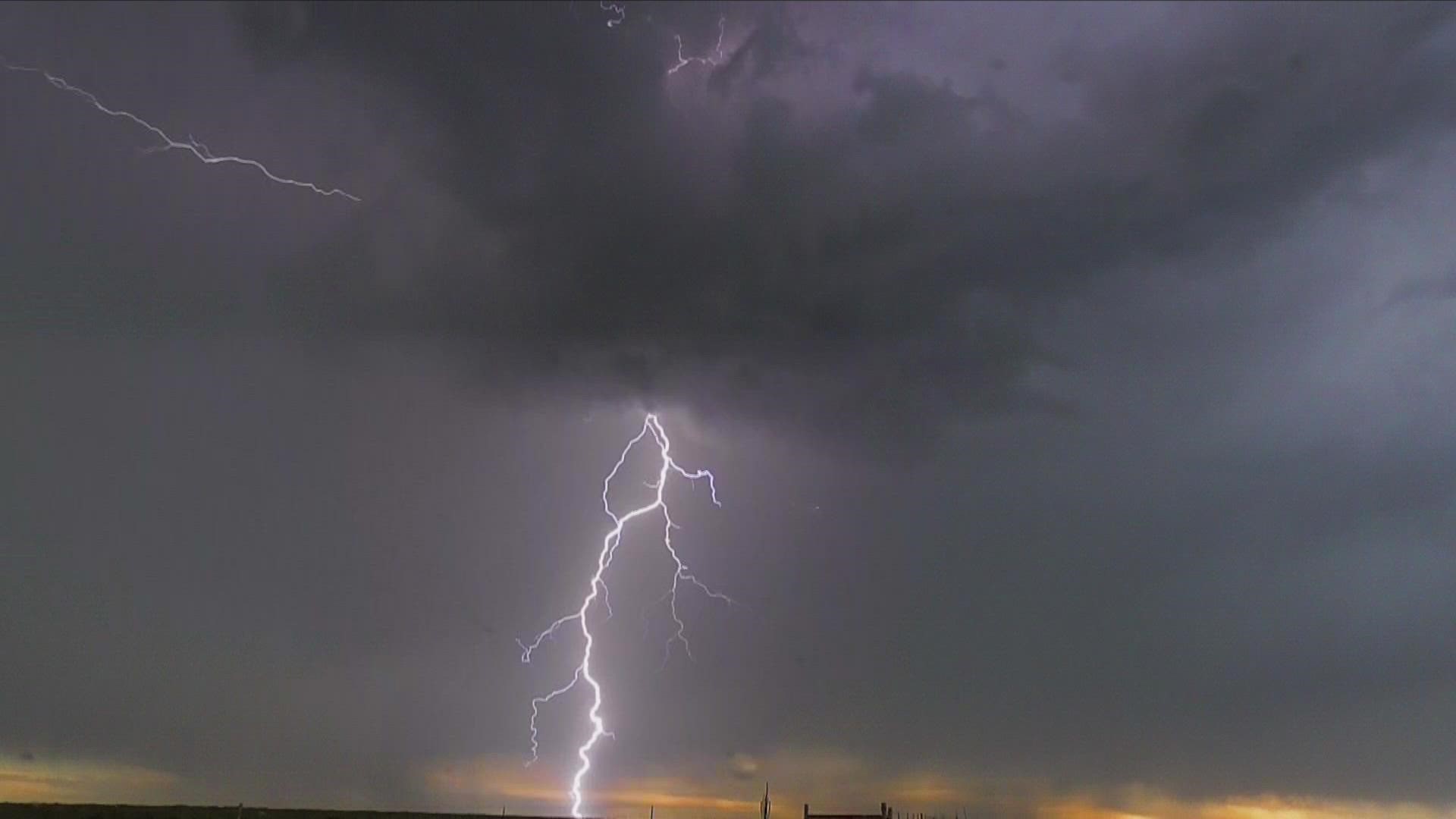LOUISVILLE, Colo. — After a slow start to thunderstorm season in Colorado, nearly 290,000 lightning flashes were recorded June 3-7.
The National Lightning Detection Network, operated out of Louisville, Colorado, detects more than 99% of all cloud to ground lightning.
“The really impactful stuff we are detecting, and detecting it really accurately -- better than a football field in accuracy," Chris Vagasky said.
Vagasky is a scientist with Vaisala, the company that owns the network.
He said the NLDN records the time and location of each lightning event along with several other detailed parameters, like if the stroke was positive or negative, the amount of electricity that flowed through it, how long it lasted and its damage probability.
With that information, scientists can isolate the most damaging bolts quickly.
“So if you can pinpoint the really impactful ones, the ones that could start a wildfire or maybe the ones that could cause damage to somebody’s house, you could really help people that way,” Vagasky said.
The lightning data also helps meteorologists issue storm warnings, because lightning activity evolves with the strength of a thunderstorm and can indicate when the greatest danger is present.
Along with cloud-to-ground strokes, the NLDN can detect 50-60% of all in-cloud lightning.
Lightning data also helps scientists investigate climate change, because the NLDN is not just in America, it’s global. Records show that lightning activity near the North Pole has been increasing in recent years, and in 2021, twice as much was detected as in the previous nine years combined.
The Arctic is warming three times faster than the rest of the planet. Scientists say thunderstorms coming out of Siberia are lasting longer as a result.
“It gives us some clues about what’s happening in the atmosphere," Vagasky said. "So this is really useful information for meteorologists and climatologists to really understand how the climate is evolving.”
State lightning capitals
Each year, Vaisala figures out which town is each state’s lightning capital. They filter the gridded density map (where each grid space is 2 km by 2 km) to find the highest density grid cell in each state and identify the city or town the grid cell is associated with. Across the western United States, cities are spaced farther apart, and some of the capitals fell in unincorporated portions of counties.
Flatonia, Texas was the lightning capital of the entire country in 2021, with 1,043 lightning events per square mile. Holyoke was Colorado's capital, with 561 events.
Lightning stats
According to Vaisala's 2021 lightning report, the NLDN detected 194 million lightning flashes in the U.S. last year. That’s slightly less than average, which is closer to 220 million, but it was up from the 170 million in 2020.
Vagasky said there was an unfavorable storm pattern in both of the last two years, but the difference was likely the monsoon. In 2020, the running joke was to call the slow summer thunderstorm season the "non-soon," but a super monsoon in 2021 boosted some of the numbers in an otherwise lackluster storm year.
Colorado lightning stats
There were 3.5 million lightning events in Colorado in 2021. That ranks 19th-most out of the 50 states, which is up five spots from 2020. Weld County had the most lightning with 123,100 events, but that is a huge county. Filtering the events by density, Phillips County led all Colorado counties with 71.5 lightning events per square mile.
Top 10 Colorado counties by density (lightning events per square mile):
- Phillips 71.5
- Sedgwick 52.6
- Kiowa 32.5
- Kit Carson 32.1
- Yuma 30.7
- Logan 30.2
- Prowers 29.7
- Cheyenne 26.7
- Baca 24.1
- Weld 22.6
SUGGESTED VIDEOS: Severe Weather

